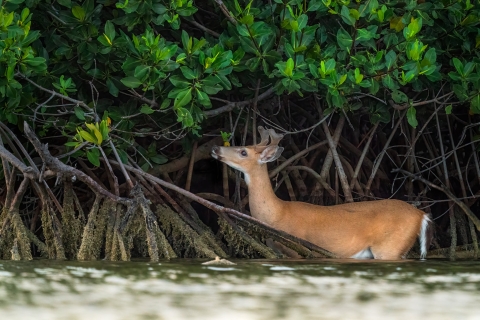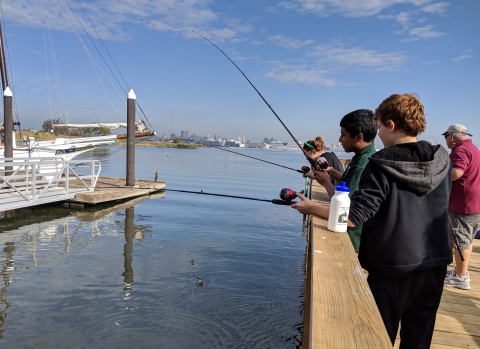States
Alabama, California, Connecticut, Delaware, Florida, Georgia, Louisiana, Maine, Maryland, Massachusetts, Mississippi, New Hampshire, New Jersey, North Carolina, Rhode Island, South Carolina, TexasEcosystem
Wetland2019 Wetlands Status and Trends Report for Coastal Watersheds
In recognition of the importance of wetlands in coastal watersheds, the U.S. Fish and Wildlife Service (FWS) and National Oceanic and Atmospheric Administration (NOAA) National Marine Fisheries Service released a joint report titled “Status and Trends of Wetlands in the Coastal Watersheds of the Conterminous United States 2009 to 2019.” The report is the third in a series, with prior releases covering 1998–2004 and 2004–2009. This report series helps us understand longer-term trends in coastal wetland loss and gain across U.S. regions.
2019 Coastal Watersheds Report
Key Report Findings:
- Wetlands cover 17% of coastal watersheds by area and 85% of these wetlands are freshwater. Coastal watersheds, which only occupy 13% of the conterminous United States by area, contain 36% of U.S. wetlands.
- Between 2009 and 2019, net wetland area decreased by 191,000 acres in coastal watersheds. This was a lower rate of loss compared to the previous two study periods (1998 to 2004 and 2004 to 2009).
- Wetland loss is concentrated in coastal watersheds. Wetland loss in coastal watersheds accounted for 86% of all net loss within the conterminous United States, even though coastal watersheds only occupy 13% of the conterminous United States by area.
Losses disproportionately affected vegetated wetlands, like swamps (forested wetlands) and marshes, resulting in the net loss of 315,000 acres of these wetlands in coastal watersheds between 2009 and 2019. This is equivalent to losing over 60 football fields of these important wetlands every day
What are Coastal Wetlands?
Coastal watersheds—that is, drainage basins affected by tides or adjacent to the Great Lakes—contain many different types of wetlands. These include saline or brackish wetlands such as salt marshes and mangroves, as well as non-saline wetlands such as freshwater marshes and swamps. Whether directly on the coast providing a home for juvenile fish or further inland absorbing flood waters, wetlands in coastal watersheds are diverse and vital to the health of coastal landscapes. However, wetlands are also some of the most threatened natural systems globally.
What Happens When We Lose Coastal Wetlands?
The loss and alteration of wetlands in coastal watersheds reduces the prosperity, health, and safety of coastal communities. This occurs through increased susceptibility of people and infrastructure to natural disasters like flooding, drought, and severe storms, as well as decreased food and water security, greater vulnerability to sea level rise and storms, and reduced recreational opportunities. Wetland loss also reduces important plant and animal populations, including commercially, culturally, and recreationally valuable species.
Conservation to Benefit Our Nation’s Citizens
Wetlands are essential to the economic prosperity of coastal communities. More than half of the U.S. population lives and works in coastal watersheds, many in fields that depend on wetlands, such as commercial fishing, tourism, and recreation.
Wetlands are also vital because they help to avoid or lessen the impact of many of our most pressing environmental challenges. These challenges include increasing temperatures, sea level rise, hurricanes and other severe storms, droughts and floods, wildfires, and the growing need for readily available clean water. The pattern of disproportionately high wetland loss and alteration in coastal watersheds is predicted to continue, if not intensify, in many areas, including the southeastern United States.
The U.S. FWS and NOAA will continue to work with all partners to conserve and restore coastal wetlands, in part by producing Wetlands Status and Trends reports for coastal watersheds. Scientific information, like this report, is foundational to the strategic implementation of all natural resource policy actions and will be critical to improving the conservation of wetlands in coastal watersheds. Continuing to reduce the loss of coastal wetlands, especially vegetated wetlands, will require a collaborative approach that includes Tribal, state, local, and private partners to ensure the lasting health of the nation’s people, environment, and economy.





